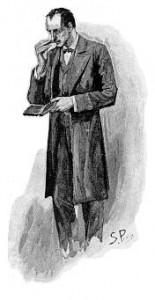There’s near unanimity in the research that critical thinking declines when we fragment our attention.
There are any number of YouTube videos offered by experienced pilots and investigators assessing what went wrong after an airplane was involved in an accident. Fortunately, these accidents do not always result in deaths. And as many have noted, the riskiest part of flying in commercial aircraft is driving to the airport. But what is noticeable in these useful post accident “debriefs” is that the person in command of a flight often forgets one of the first rules of aviating: first and always, Fly the Plane. Distraction is a major contributor to mishaps. Confusing instrument readings, incorrect settings and a hundred other things can go wrong. And they can begin to consume all of the attention of those in the cockpit. Problems dramatically escalate if a captain forgets to monitor the basics, including maintaining sufficient airspeed, keeping safe altitudes and choosing the right headings. Long troubleshooting checklists are useful, but also distracting. They contribute to the same delusion most of the rest of us share that we can do several things well at once. We can’t. Our brains have not evolved to undertake simultaneous and complex actions at the same time.

This can apply to driving as well. The comparison is apt because driving safely on America’s roads has become an all-hands-on-deck endeavor. To be less than present is to be a looming danger to oneself and others. For example, a driver on a handheld phone has the reduced competency we associate with alcohol impairment. They can no longer monitor conditions to act defensively. This partly explains the rise of pedestrian deaths, resulting from drivers who have found too many other things to do while supposedly minding their two ton machine. What applies in the air applies even more on the ground. first, Drive the Car.
![]()
We are simply not wired to split short-term memory between a variety of stimuli. We may think otherwise. But there’s near unanimity in the literature on comprehension that critical thinking and response rates decline when we fragment our attention. To put it simply, multitasking makes us a little bit stupid. As researcher Clifford Nass famously noted, multitaskers are “suckers for irrelevancy.” Because “everything distracts them,” their intellectual performance on important tasks deteriorates. Sometimes the person addicted to a digital stew of stimuli is the last to know that they have become intellectually impaired. It’s a common mistake to assume that being “busy” means being “fully engaged.” We perform our busyness as a badge of honor. But it is closer to the truth that the more we construct lives around external stimuli, the less we are able to get past the self-induced distraction that they create.
On America’s campuses the sacred cow of full connectivity makes it a virtual certainty that, while students may be placing their bodies in the classroom, their minds are elsewhere. Multi-tasking in educational settings is the norm. One Stanford faculty member notes that his research indicates a full quarter of his students are trying to use four different media at the same time while there are ostensibly focused on writing term papers. And the results are not pretty. Distracted writers give themselves the mental acuity of a child.
Try a simple experiment. Attempts to read your e-mail or a series of text messages while also listening to someone explain how to get to an address on the other side of town. No GPS allowed. An active and full-time listener will probably process the directions correctly, or ask questions until they have the mental map they need. The encumbered listener is more likely to end up lost, often compounding their distraction by calling from a moving car to get new directions.
The fragmentation of daily life into competing activities undermines competencies we value.
![]()
Of course there are still those from all walks of life who still have the will to track the exposition of a complex idea for an extended period; younger readers happily caught in the thrall of a writer or literary genre; newspaper consumers who will follow an investigative story across three pages of a broadsheet; or the curious who are sufficiently engaged to listen to another for a sustained amount of time. But these individuals increasingly seem to be cultural outliers. We now tend to notice the rare person capable of full devotion to just one thing, sometimes flipping the arrows by wondering if they have some sort of condition.
So the caution stands: the fragmentation of daily life into competing multiple activities undermines competencies we should want to nurture. Lie to yourself if you must; but you are not exempt. The things worth doing in life –-if they are truly worthy of our time–are too important to be compromised by incessant interruption. My guess is that Joseph Haydn would have never gotten around to writing 106 symphonies if he had owned a smartphone and an e-mail account. How would he have had the time?
![]()


 One answer to this problem is to discipline ourselves to follow a more linear pattern of involvement, even though cultivating this kind of thinking cuts against the grain of the culture. Walking or taking a hike sans phone can be a start. Your body would welcome the chance to hear from your uninterrupted consciousness.
One answer to this problem is to discipline ourselves to follow a more linear pattern of involvement, even though cultivating this kind of thinking cuts against the grain of the culture. Walking or taking a hike sans phone can be a start. Your body would welcome the chance to hear from your uninterrupted consciousness.